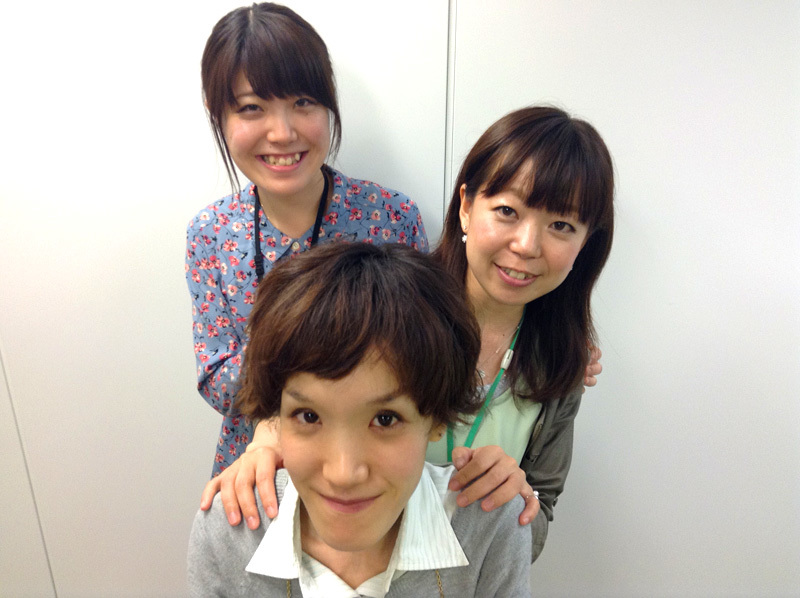We've collaborated on several projects with " Yon-nana Club," an online shopping site where you can discover hidden gems from regional areas that haven't yet made the news. One of these projects is "Yon-nana Club's Own Innovation." Previously, it was simply a site listing products curated by regional newspapers. Now, working together with the staff, we're striving to "unearth even more 'Wow, they have this!' discoveries from regional areas and recommend them to customers!" Even on the homepage, which previously only featured typical online store specials like "seasonal items" or "mid-year gifts," they've started projects that make you want to read more.
 |
Creating these "Wow, they have this!" features: Yamamoto, Watanabe, and Kawai. (From front row)
|
The "World Gourmet Ingredients Evolving with Japanese Quality" feature is one such example. It explores how gourmet ingredients like caviar and olive oil—often believed to be best when sourced directly from their foreign origins—can achieve unique evolution through the meticulous craftsmanship of Japanese producers.
Take pure domestic olive oil, for example. Farmers on Shodoshima Island identify perfectly ripe olives and handpick each one individually. The reason is that "olives are extremely delicate." In Italy, where they originate, harvest volumes are large, making such meticulous care difficult to achieve. While many domestic olive oils are simply foreign-grown olives pressed in Japan, olive oil cultivated, harvested, and pressed by the delicate hands of Japanese people is rare, accounting for just 0.04% of the domestic market.
Recently, caviar has become available from various domestic sources, but Okayama Prefecture's "Fresh Caviar" prides itself on letting you enjoy the true flavor of sturgeon roe. This is because caviar is typically preserved with high salt content for long-term storage and long-distance transport. Even authentic Caspian Sea caviar is heavily salted as standard practice for transport to major consumption centers like Moscow and Paris. However, with domestic caviar, consumption areas are nearby and distribution is efficient. This allows for a "less salty caviar" where salt levels are kept to the minimum necessary to enjoy the umami flavor.
 |
Photos from a business trip to Russia
|
Years ago, during a business trip to Moscow and Kazakhstan for an advertising experiment on the International Space Station—another dubious (laughs) purpose—I sampled regional Russian cuisine. Sometimes, following Russian staff recommendations, I'd start lunch with ice-cold vodka. My souvenir for family was a fairly large can of caviar. I remember starting cautiously with just a little, then becoming bold out of fear it might go bad, and finally piling it onto piping hot white rice thinking, "Ah, I've eaten enough caviar for a lifetime." I don't recall how salty it was back then, but when they say "caviar that tastes like genuine sturgeon roe, not salty," it's just irresistible... Hmm, I want to try it...
Hearing from the Yonana Club, I made many other discoveries like, "Wow, even gourmet ingredients like this are produced domestically!" That said, it's a shame that many were simply cases of "they just started making it domestically." Of course, the "delicate and meticulous work of the Japanese" itself holds great value. But if, like hand-picked olives or unsalted caviar, the difference "because it's domestic" becomes clear, it should make purchasing much easier. There are probably many local businesses that could expand simply by becoming better at introducing themselves.
Next time, I'll share insights about target audiences I gained from discussions with these local business owners.
Enjoy!






